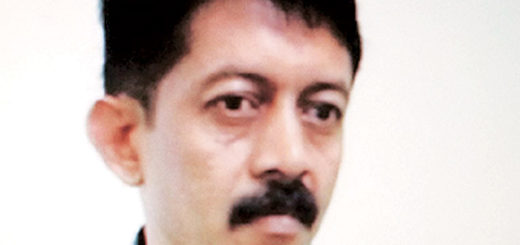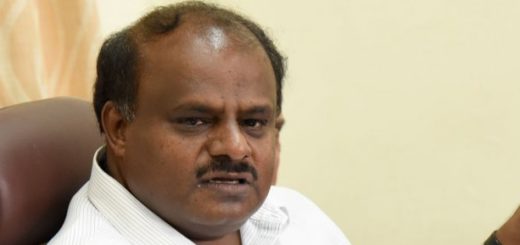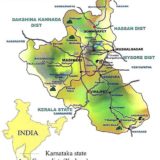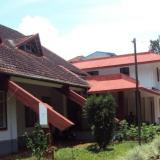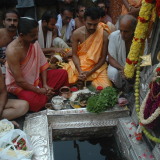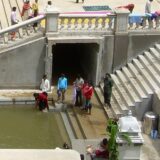By P.T. Bopanna
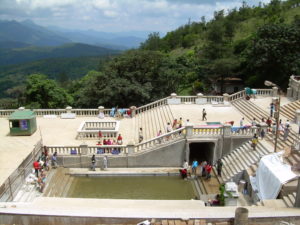
The unprecedented flooding and landslides in Kodagu in the last two years has led to panic among the residents as they fear for their safety.
The widening cracks in the Brahmagiri hill range, the source of river Cauvery, in the past couple of months has led to apprehension that the Brahmagiri peak may cave in and wipe out the Talacauvery shrine, considered as one of the holiest places in southern India.
Besides Talacauvery, cracks have been noticed at hillocks near Virajpet, including Aiyappa Betta, overlooking the town. There is a fear among the residents of Virajpet that the town is not safe.
K.V. Maruthi, director, Geological Survey of India (GSI), has been quoted as saying: “Cracks show the possibility of landslides in the future if preventive measures are not taken.”
While in 2018, the northern parts of Kodagu were affected by the landslides, this year the epicentre was at Thora village in the southern part of the district near Virajpet.
According to a GSI report, slope modification was the main cause for landslides. The report also noted the absence of guidelines, regulations and monitoring related to land-use changes in the area had contributed to the tragedy.
Experts say extreme rainfall within a short span triggered by climate change is one of the reasons for unprecedented floods. For instance, this year, Kodagu received 935 mm rain from August 1 to 9, compared to the average rainfall of 600 mm for the entire month of August.
Another feature noticed in the last two years in Kodagu is the phenomenon of weak monsoon in its early days, and massive precipitation in August.
Geologists Sunandan Basu and Kapil Singh noted that the cracks involving houses near Virajpet was basically due to the fact that the settlement was on a modified slope. Modification of hill slopes for construction of houses and road widening without proper support had destabilised the area. This could trigger landslides in future, the geologists opined.
Ecologist Madhav Gadgil, who headed the Western Ghats Ecology Expert Panel (WGEEP), stated that this year’s floods and landslips in the Western Ghats, especially in Kerala, were not totally man-made. “Natural calamities are a complex phenomenon. There will be multiple factors. Extreme rainfalls were partially responsible. But man-made causes too contributed,” he said.
He noted that landslips occur if natural vegetation cover is destroyed. “Construction of roads, certain types of quarries, levelling of land using heavy machineries can all disturb the area and trigger landslips,” he said.
There is no denying the fact that the cutting down of over 50,000 in Kodagu a few years ago for the 400KV high tension power line from Mysuru to Kozhikode in Kerala had taken its toll on the land.
In the circumstances, there is need for insulating Kodagu from future landslides and floods. This is possible only if the entire Kodagu is declared as an ecologically sensitive area.
Such an extreme step is required not only to save Kodagu, but also to save the river Cauvery which takes its birth in the district. Moreover, Kodagu is the main catchment area for Cauvery.
But any move to declare Kodagu as ESA should be done by taking the local people into confidence. Any regulation which could affect the indigenous communities should be avoided. There is need for a debate. In the case of the Kasturirangan report to conserve the Western Ghats, there was no proper debate as vested interest spread panic among the people.
The people of Kodagu have finally come to realise that their survival is at stake, unless steps are taken to protect forests and revive paddy cultivation. The unprecedented flooding in the last two years has woken up the people and has exposed the nefarious designs of the politicians backed by the timber lobby.

